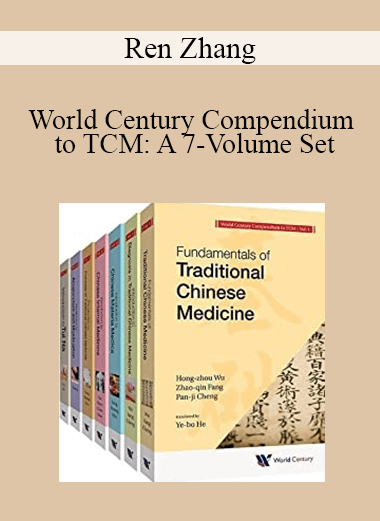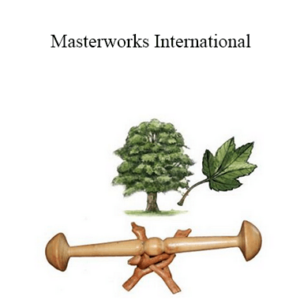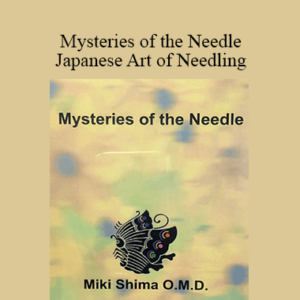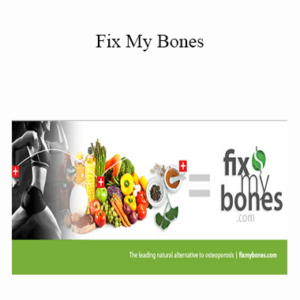Ren Zhang – World Century Compendium to TCM: A 7-Volume Set
Traditional Chinese medicine (TCM), with a history of thousands of years, is the crystallization of the ancient Chinese people’s experience in their struggle against diseases. It is also an integral part of their splendid culture. Under the influence and direction of classic Chinese philosophies, it has undergone long-term medical practice and infiltrated into, as well as absorbed from, other subjects at that time, thus gradually evolving into a unique medical theoretical system that contributed significantly to the health care of the Chinese people and the prosperity of the Chinese nation. This 7-volume set comprehensively covers the main components of TCM, such as Basic Theory, Diagnosis, Prescription, Chinese Materia Medica, Tui Na, Acupuncture and Moxibustion.
Contents:
- Volume 1: Fundamentals of Traditional Chinese Medicine:
- Introduction
- The Theory of Essence, Qi and Spirit
- The Theory of Yin and Yang
- The Theory of Five Elements
- The Theory of Visceral Manifestation
- Qi, Blood, and Body Fluid
- The Theory of Meridians and Collaterals
- Body Constituents, Sensory Organs and Orifices
- Etiology and Nosogenesis
- Pathogenesis
- Life Cultivation, Therapeutic Principles and Methods
- Volume 2: Introduction to Diagnosis in Traditional Chinese Medicine:
- Introduction to Diagnosis in Chinese Medicine
- The Four Diagnostic Methods
- The Eight Principles
- Syndrome Differentiation
- Identification of Common Signs and Symptoms
- Syndrome Differentiation and Medical Records
- Syndrome Differentiation and Treatment for Common Conditions
- Volume 3: Introduction to Chinese Materia Medica:
- First Week
- Second Week:
- Medicinals that Release Exterior
- Acrid-Cool
- Third Week:
- Medicinals that Clear Heat
- Fourth Week:
- Purgatives
- Fifth Week:
- Medicinals That Dispel Wind-Damp
- Aromatic Medicinals that Remove Dampness
- Sixth Week:
- Medicinals that Relieve Water Retention
- Medicinals that Warm the Interior
- Seventh Week:
- Medicinals that Regulate Qi
- Eighth Week:
- Medicinals that Relieve Food Stagnation
- Medicinals that Expel Worms
- Medicinals that Stanch Bleeding
- Ninth Week:
- Medicinals that Invigorate Blood
- Tenth Week:
- Medicinals that Dissolve Phlegm
- Medicinals that Arrest Cough and Wheezing
- Eleventh Week:
- Medicinals that Calm the Spirit
- Medicinals that Calm the Liver and Extinguish Wind
- Twelfth Week:
- Medicinals that Open Orifices
- Medicinals that Supplement Qi
- Medicinals that Nourish Blood
- Thirteenth Week:
- Medicinals that Enrich Yin
- Fourteenth Week:
- Medicinals that Tonify Yang
- Astringent Medicinals
- Volume 4: Introduction to Chinese Internal Medicine:
- Common Ailments
- Diseases of the Respiratory System
- Cardiovascular Diseases
- Disorders of the Digestive System
- Disorders of the Urinary System
- Disorders of the Hematological System
- Disorders of the Endocrine System
- Neuropsychic Diseases
- Connective Tissue Diseases
- Metabolic Diseases
- Volume 5: Introduction to Formulae of Traditional Chinese Medicine:
- Chinese Medicine and Medicinals
- Prescribing a Formula in Accordance with the Pattern
- The Exterior Pattern
- The Half-Exterior and Half-Interior Pattern
- The Cold Pattern
- The Heat Pattern
- The Phlegm–Rheum and Water–Dampness Pattern
- The Wind Pattern
- The Qi Stagnation Pattern
- The Static Blood Pattern
- The Food Accumulation Pattern
- The Wind–Damp Pattern
- The Deficiency Pattern
- The Complex Pattern
- Formulae for Diseases of the Respiratory System
- Formulae for Diseases of the Digestive System
- Formulae for Diseases of the Cardiovascular System
- Formulae for Diseases of the Urogenital System
- Formulae for Diseases of the Nervous System
- Volume 6: Introduction to Acupuncture and Moxibustion:
- Old Yet Young Chinese Acupuncture and Moxibustion
- Meridians and Collaterals
- Distribution of the 14 Meridians and Collaterals
- Introduction to Acupoints
- Specific Points
- Commonly Used Acupoints
- Techniques of Acupuncture and Moxibustion
- Prevention and Management of Possible Accidents in Acupuncture Treatment
- Filiform Needles
- Introduction to Acupuncture Manipulations
- Moxibustion
- Cupping, Warm Needling and Fire Needling
- Dermal Needling, Collateral Bloodletting and Intradermal Needling
- Electroacupuncture, Acupoint Application, Acupoint Injection and Acupoint Laser Irradiation
- Ear Acupuncture
- Scalp Acupuncture
- Eye Acupuncture and Wrist–Ankle Acupuncture
- A General Introduction to Acupuncture Treatment
- Acupuncture and Moxibustion for Infectious Diseases
- Acupuncture and Moxibustion for Diseases of the Respiratory and Circulatory Systems
- Acupuncture and Moxibustion for Diseases of the Digestive and Blood Systems
- Acupuncture and Moxibustion for Diseases of the Metabolic and Immune Systems
- Acupuncture and Moxibustion for Diseases of the Neural and Mental Systems
- Acupuncture and Moxibustion for Diseases of the Urinary and Reproductive Systems
- Acupuncture and Moxibustion for Diseases of Surgery
- Acupuncture and Moxibustion for Obstetrics and Gynecology Diseases
- Acupuncture and Moxibustion for Pediatric Diseases
- Acupuncture and Moxibustion for ENT Diseases
- Acupuncture and Moxibustion for Dermatological and Other Diseases
- Acupuncture and Moxibustion for Healthcare
- Volume 7: Introduction to Tui Na:
- Week 1:
- Day 1: A Brief History of Tui Na
- Day 2: Fundamental Knowledge of Tui Na
- Day 3: Meridians, Collaterals, and Acupuncture Points
- Day 4: Circulation Pathways of the 14 Meridians and Vessels
- Day 5: Commonly Used Shu Xue (Acupoints), Part I
- Day 6: Commonly Used Shu Xue, Part II
- Week 2:
- Day 1: Commonly Used Shu Xue, Part III
- Day 1: Commonly Used Extraordinary Non-Meridian and Non-Vessel Points
- Day 2: Common Diagnostic Methods for Tui Na Examination of the Upper Extremities
- Day 3: Examination of the Lower Extremities
- Day 4: Examination of the Torso
- Day 5: Examination of the Neurological System
- Day 6: Anatomy of Normal Bones and Joints Under X-rays
- Week 3:
- Day 1: Tui Na for Adults
- Day 2: Rubbing
- Day 3: Twiddling
- Day 4: Smearing
- Day 5: Lateral Striking with Palms Clasped
- Day 6: Rotating
- Week 4:
- Day 1: Tui Na Treatment for Adults
- Day 2: Hypertension
- Day 3: Stomachache
- Day 4: Gastroptosis
- Day 5: The Common Cold
- Day 6: Chronic Bronchitis
- Week 5:
- Day 1: Coronary Heart Disease
- Day 2: Diarrhea
- Day 3: Constipation
- Day 4: Chronic Cholecystitis
- Day 5: Sequelae of Gastric Surgery
- Day 6: Polyneuritis
- Week 6:
- Day 1: Facial Neuritis
- Day 2: Dysmenorrhea
- Day 3: Acute Mastitis
- Day 4: Shoulder Periarthritis
- Day 5: Humeral Epicondylitis
- Day 6: Stenosing Tenosynovitis
- Week 7:
- Day 1: Ganglion Cyst
- Day 2: Ischemic Contracture of the Forearm Muscles
- Day 3: Distal Radioulnar Joint Injury
- Day 4: Peripheral Nerve Injury
- Day 5: LàoZhĕn (Acute Stiff Neck)
- Day 6: Temporomandibular Joint Dysfunction
- Week 8:
- Day 1: Cervical Spondylosis
- Day 2: Sudden Hypochondriac Burst Injury
- Day 3: Acute Lumbar Soft Tissue Injury
- Day 4: The Third Lumbar Transverse Process Syndrome
- Day 5: Degenerative Lumbar Spondylitis
- Day 6: Kidney Deficient Lumbago
- Week 9:
- Day 1: Lumbar Disc Herniation
- Day 2: Ankylosing Spondylitis
- Day 3: Juvenile Kyphosis
- Day 4: Spondylolysis and Spondylolisthesis
- Day 5: Lumbar Spinal Stenosis
- Day 6: Osteitis Condensansilii
- Week 10:
- Day 1: Developmental Lumbosacral Abnormalities
- Day 2: Superior Cluneal Nerve Injury
- Day 3: Piriformis Syndrome
- Day 4: Suprapatellar Bursa Hematoma
- Day 5: Medial Collateral Ligament Injury
- Day 6: Tarsal Tunnel Syndrome
- Week 11:
- Day 1: Rheumatoid Arthritis
- Day 2: Hemiplegia
- Day 3: Asthma
- Day 4: Facial An Mo
- Day 5: Pediatric Tui Na
- Day 6: Common Maneuvers in Pediatric Tui Na
- Week 12:
- Day 1: Common Acupoints in Pediatric Tui Na
- Day 2: Thoracic and Abdominal Acupoints
- Day 3: Acupoints of the Back
- Day 4: Acupoints of the Upper Extremities, Part I
- Day 5: Acupoints of the Upper Extremities, Part II
- Day 6: Acupoints of the Lower Extremities
- Week 13:
- Day 1: Tui Na for Common Pediatric Disease
- Day 2: Fever
- Day 3: Bronchial Asthma
- Day 4: Coughs
- Day 5: Infantile Malnutrition with Accumulation
- Day 6: Constipation
- Week 14:
- Day 1: Nocturia
- Day 2: Infantile Muscular Torticollis
- Day 3: Scoliosis
- Day 4: Sequela of Poliomyelitis
- Day 5: Cerebral Palsy
- Day 6: Ŏu Tù (Vomiting)
- Week 1:
Delivery Method
– After your purchase, you’ll see a View your orders link which goes to the Downloads page. Here, you can download all the files associated with your order.
– Downloads are available once your payment is confirmed, we’ll also send you a download notification email separate from any transaction notification emails you receive from coursesblock.com
– Since it is a digital copy, our suggestion is to download and save it to your hard drive. In case the link is broken for any reason, please contact us and we will resend the new download link.
– If you cannot find the download link, please don’t worry about that. We will update and notify you as soon as possible at 8:00 AM – 8:00 PM (UTC 8).
Thank You For Shopping With Us!







